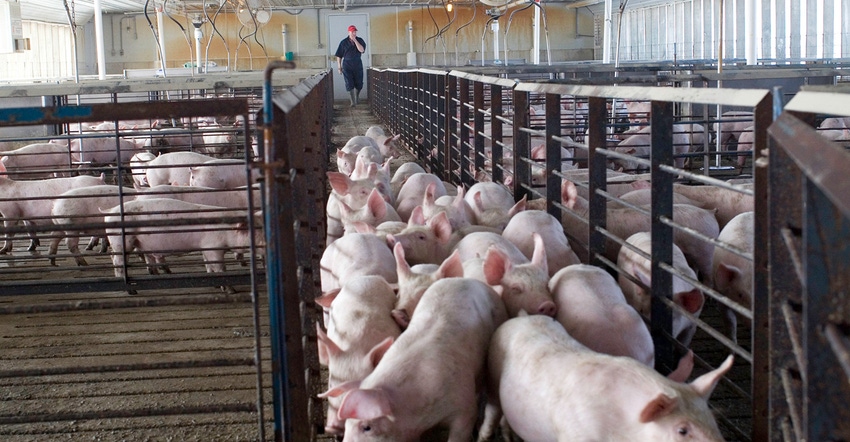Manage major respiratory diseases in your swine herd using the only USDA-approved trivalent vaccine for protection against PRRS, PCV2 and Mhp.
January 12, 2017

Sponsored Content
In a time when hog prices are trending lower, farmers are doing their best to be as cost-efficient as possible. This means ensuring protection against multiple respiratory diseases throughout the entire grow-finish period. Co-infections, which are caused by diseases in the Porcine Respiratory Disease Complex, have unfortunately become the norm in swine barns across the U.S. swine industry. Their impact on pig health, performance and profitability is much greater than a single disease challenge.
PRDC includes both viral and bacterial respiratory pathogens, specifically porcine reproductive and respiratory syndrome virus, Porcine Circovirus type 2, Influenza Type A Virus-Swine, M. hyopneumoniae and secondary bacterial agents.
Eduardo Fano, DVM, MS, Ph.D., technical manager, Boehringer Ingelheim Vetmedica Inc. explains the importance of proper diagnosis. “PRDC is complex. There are several disease agents involved in PRDC, so it is important to identify which pathogens are involved in a specific clinical case to properly treat the animal.” Fano says incorrect management of PRDC could negatively impact production and profitability.
Fano recommends individual-based diagnostic testing on a clinical event to help identify the causative agent. “This will show if the PRDC management strategy is working properly and you can use the information to make more accurate decisions when it comes to combating the diseases,” he explains.
When an outbreak occurs, it can cost producers more than 10 dollars per pig due to increased need for medication, decreases in growth rates and feed efficiency, and increased mortality rates and culls.1 Not all cases of PRDC present themselves the same. While some are less severe than others, it’s important to notice the clinical signs; lethargy, anorexia, fever, nasal discharge, ocular (eye) discharge, coughing, labored breathing and purple discoloration of the skin. Timely vaccination and management strategies are key to successfully preventing PRDC.
Vaccination protocol
BIVI offers the only USDA-approved combination vaccine for protection against PRRS, PCV2, Mhp in a single injection. “3FLEX vaccine gives producers the ability to ensure vaccine derived immunity against three of the most common and toughest swine respiratory diseases. With just a one-shot vaccine administration, producers can save significant time and labor costs, while also reducing pig stress and risk of injury in the barn,” says Fano.
More importantly, extensive research studies show that this vaccine consistently provides robust immunity protection against multiple disease challenges associated with the three primary respiratory pathogens. “There is no interference between the individual antigens when administered to pigs as a single injection. This means you can be confident in effectively immunizing pigs against all three diseases.”
Beyond vaccination
In addition to a strong vaccination program, there are three key factors involved in the prevention of PRDC:
Biosecurity: From transportation, to supplies to people and neighbors, use biosecurity measures to minimize introduction of disease.
Surveillance program: Monitoring your herds performance, disease prevalence and virus introductions. Use diagnostics to understand where viruses are coming from and take measures to control your risks.
Pig flow management: Management strategies such as All-In—All-Out swine production can help reduce disease transmission and improve performance.
It’s important for producers and veterinarians to work together with their neighbors and business partners to minimize risk and manage co-infections. That’s why BIVI has developed area regional control programs for PRRS to help producers facilitate the sharing of disease information through regular industry meetings. “If we all work together to manage, monitor and share information of swine diseases, we can work towards solutions in the battle against co-infections,” says Fano.
Work with your veterinarian to implement a customized PRDC management program to help minimize the impact on performance and profitability in your herd.
1 Haden C, et al. Assessing production parameters and economic impact of swine influenza, PRRS and Mycoplasma hyopenumoniae on finishing pigs in a large production system. AASV. 2012; 75-6.
2 BIVI study number: 6131-0981-06P-086
About the Author(s)
You May Also Like


